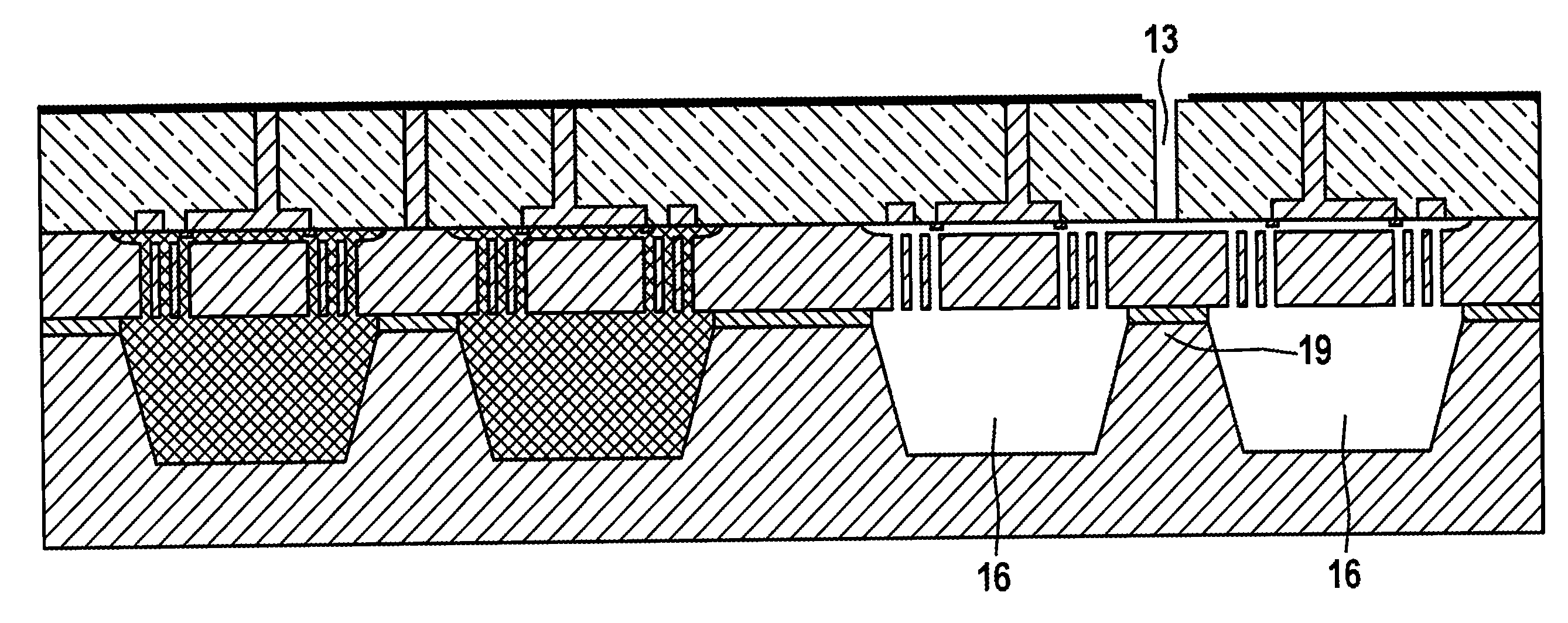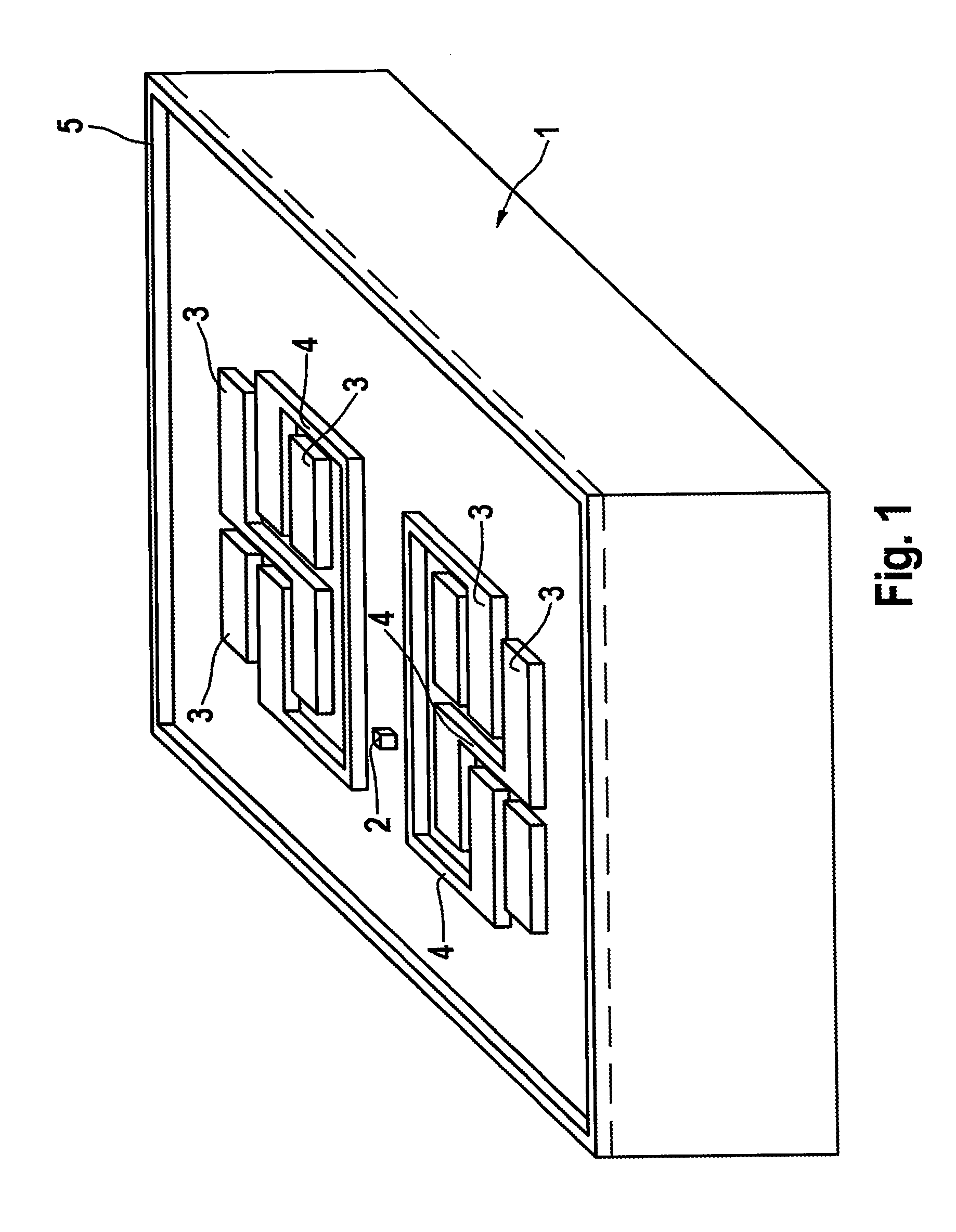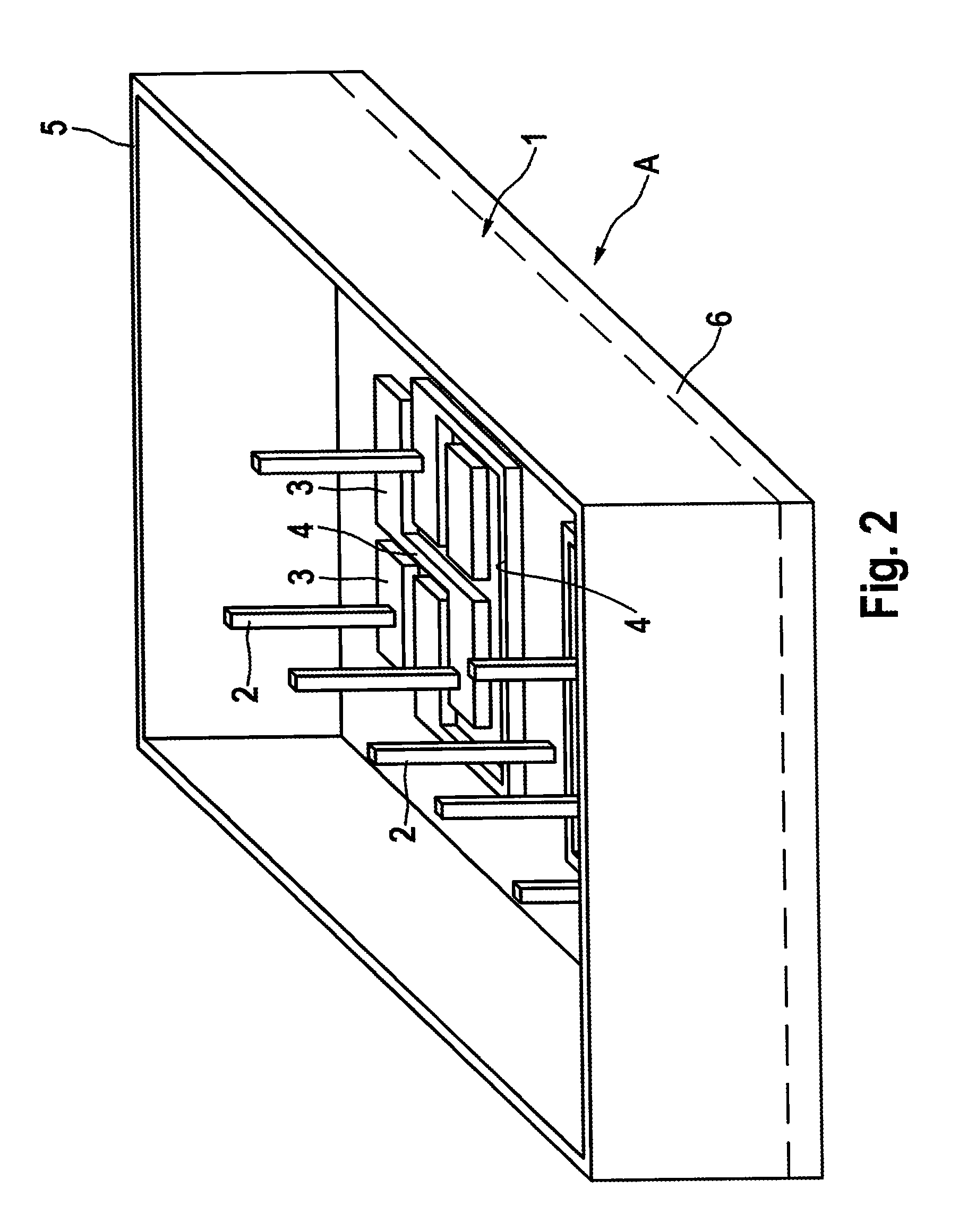Encapsulation Module Method for Production and Use Thereof
a technology of encapsulation module and micromechanical arrangement, which is applied in the direction of electrical apparatus casing/cabinet/drawer, semiconductor/solid-state device details, electrical apparatus casing/cabinet/drawer, etc., can solve the problems of parasitic effects creeping, high temperature gradient or deficient long-term stability, and adverse effects on the parameters of components, etc., to achieve reliable and robust connection
- Summary
- Abstract
- Description
- Claims
- Application Information
AI Technical Summary
Benefits of technology
Problems solved by technology
Method used
Image
Examples
Embodiment Construction
[0084]FIG. 1 shows an exemplary wafer or blank 1 composed of electrically conductive semiconductor material, in this case doped silicon, from which semiconductor material is removed by means of an etching method, whereby electronic connection means are formed. In this case, proceeding from the top surface of the wafer 1, etching is effected substantially perpendicularly downward. There are formed on the wafer by way of example semiconductor electrodes 3, semiconductor interconnects 4, which produce electrical connections between semiconductor electrodes, and also an initial formation of a plated-through hole 2 without an assigned semiconductor electrode or semiconductor interconnect as electronic connection means. Furthermore, the wafer 1 has a frame 5. Such a frame is not present in an alternative exemplary embodiment (not illustrated). Semiconductor electrodes 3 are formed substantially in insular fashion, by way of example.
[0085]In FIG. 2, the doped silicon of the wafer or blank ...
PUM
 Login to View More
Login to View More Abstract
Description
Claims
Application Information
 Login to View More
Login to View More - R&D
- Intellectual Property
- Life Sciences
- Materials
- Tech Scout
- Unparalleled Data Quality
- Higher Quality Content
- 60% Fewer Hallucinations
Browse by: Latest US Patents, China's latest patents, Technical Efficacy Thesaurus, Application Domain, Technology Topic, Popular Technical Reports.
© 2025 PatSnap. All rights reserved.Legal|Privacy policy|Modern Slavery Act Transparency Statement|Sitemap|About US| Contact US: help@patsnap.com



